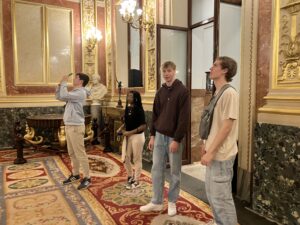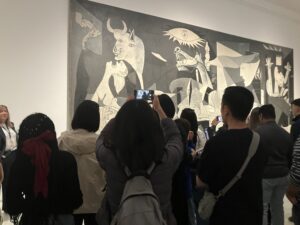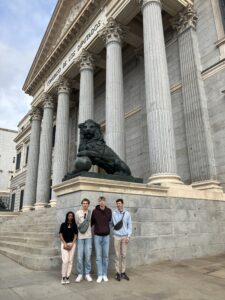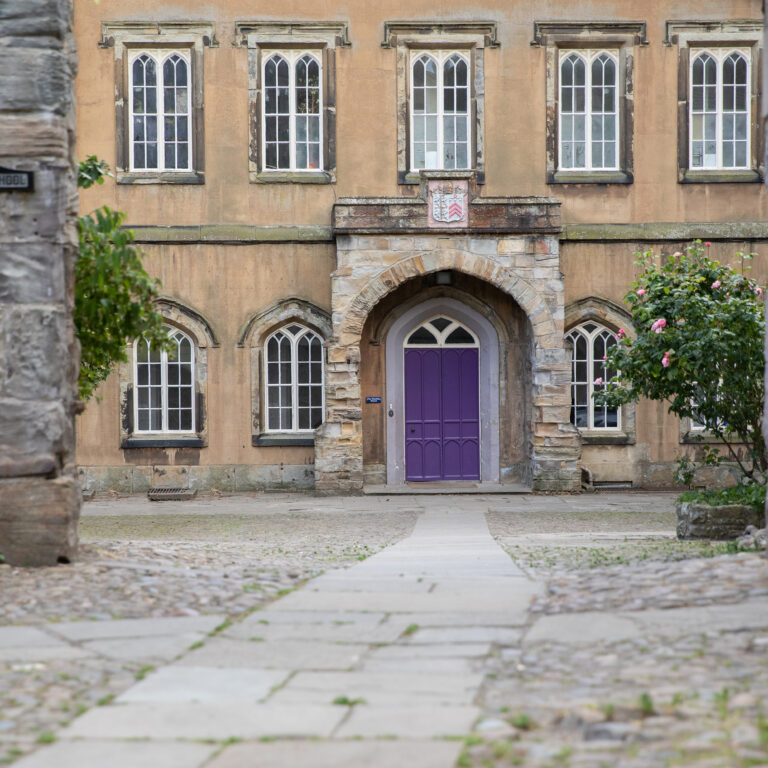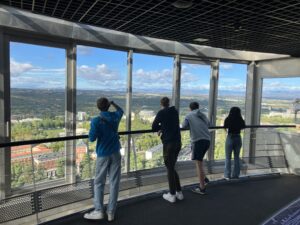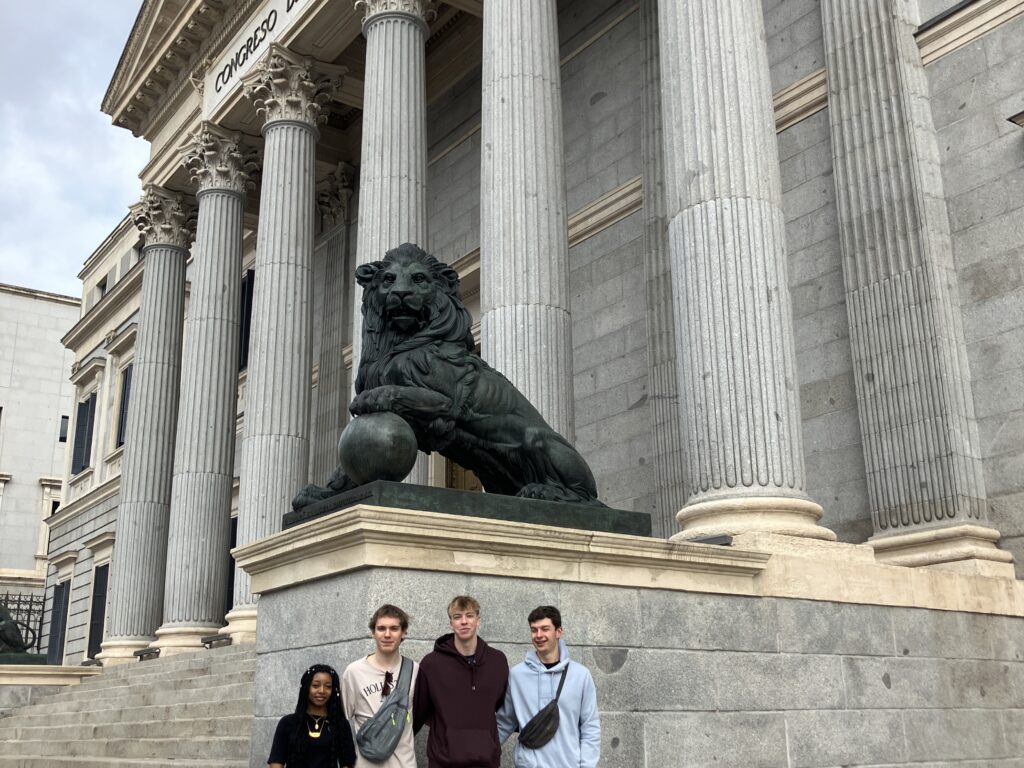
A reflection on the A Level Spanish trip to Madrid by Ms C Piñán, Spanish Subject Leader & EAL Coordinator.
In the first week of our October half term, I had the pleasure of taking my four wonderful A-Level Spanish pupils (Clara, Sam, Matthew and Johnny) on an unforgettable cultural and linguistic trip to Madrid. We stayed right in the heart of Chueca, in a fabulous flat with a balcony overlooking the lively Plaza de Pedro Zerolo. From there, we could watch the buzz of local life below — cafés spilling onto the pavement, music drifting through the air, and the evening light softening the city’s rooftops. The best aspect of the flat was that it was so central and were able to walk everywhere (thanks to Sam’s excellent map reading skills!)
Our first major visit was to the Museo Reina Sofía, where we came face to face with Picasso’s Guernica. Standing before the vast canvas, the pupils were captivated by the raw emotion and symbolic power of the painting. Having studied some background to it already, they were able to appreciate its significance as both a masterpiece and a political statement. It was particularly valuable to have seen Guernica the day before our Civil War tour, as our guide referred to it several times when discussing the human cost and psychological impact of the conflict. We are continuing to explore Guernica and its context more deeply in our Spanish lessons over the coming weeks, and seeing it in person has given the students a much richer understanding of its meaning.
On the Sunday after our visit to the Reina Sofía, we enjoyed a relaxing walk around El Retiro Park, one of Madrid’s most beautiful green spaces. The pupils loved the peaceful atmosphere after the intensity of the museum visit — rowing boats gliding across the lake, families strolling beneath autumn trees, and street performers filling the park with music.
The next day we embarked on a 2.5h Civil War walking tour of Madrid with historian Dr David Mathieson, who brought the city’s turbulent past vividly to life. As we traced the front lines and explored key sites, the students gained a real sense of how the conflict shaped modern Spain, hearing stories of bravery, loss, and survival on the very streets we walked. David was a superb guide, and his knowledge of this violent period of Spanish history captivated the pupils.
A day later we ventured out to El Escorial and El Valle de Cuelgamuros. Despite our best planning, a slight timing mishap by me and my inability to read a timetable correctly meant we missed the first train; however, once we arrived at El Escorial, the pupils were left in awe by the vast royal monastery and palace built under King Philip II. Wandering through its courtyards and echoing stone halls, the pupils were struck by the grandeur of Spain’s imperial past. In contrast, the visit to El Valle de Cuelgamuros (formerly known as El Valle de los Caídos) prompted deep reflection. Standing before the enormous basilica carved into the mountainside, we discussed the lasting divisions of the Spanish Civil War and how Spain continues to grapple with its history.
The following day, after a very relaxed morning in the flat, we spent a couple of hours exploring the Museo del Prado, admiring Goya’s haunting Black Paintings and masterpieces Las Meninas by Velázquez and El Jardín de las delicias by El Bosco. Afterwards, the pupils enjoyed some free time to wander the city, have a bite to eat, and do a little shopping.
That same evening, we attended a vibrant Flamenco show at a Centro Cultural in Chueca, an hour-long performance full of rhythm, emotion, and intensity. The pupils were completely enthralled by the energy of the dancers and the passion of the musicians.
The following morning, we were treated to a guided tour of the Congreso de los Diputados, Spain’s national parliament. Highlights included seeing the original 1978 Constitution displayed in its glass cabinet and spending time in the hemiciclo, where parliamentary debates take place — a rare and fascinating experience.
That evening, our cultural immersion continued with a moving performance of Lorca’s La Casa de Bernarda Alba. Experiencing the play live and in Spanish deepened the pupils’ understanding of Lorca’s themes of repression and defiance, bringing their classroom studies to life.
By the end of the trip, I would like to think that each student had deepened not only their understanding of Spanish culture and history but also their enthusiasm for the language itself. The journey was more than just a study visit — it was an immersion in the living heartbeat of Spain, and hopefully one they will remember long after returning home.
